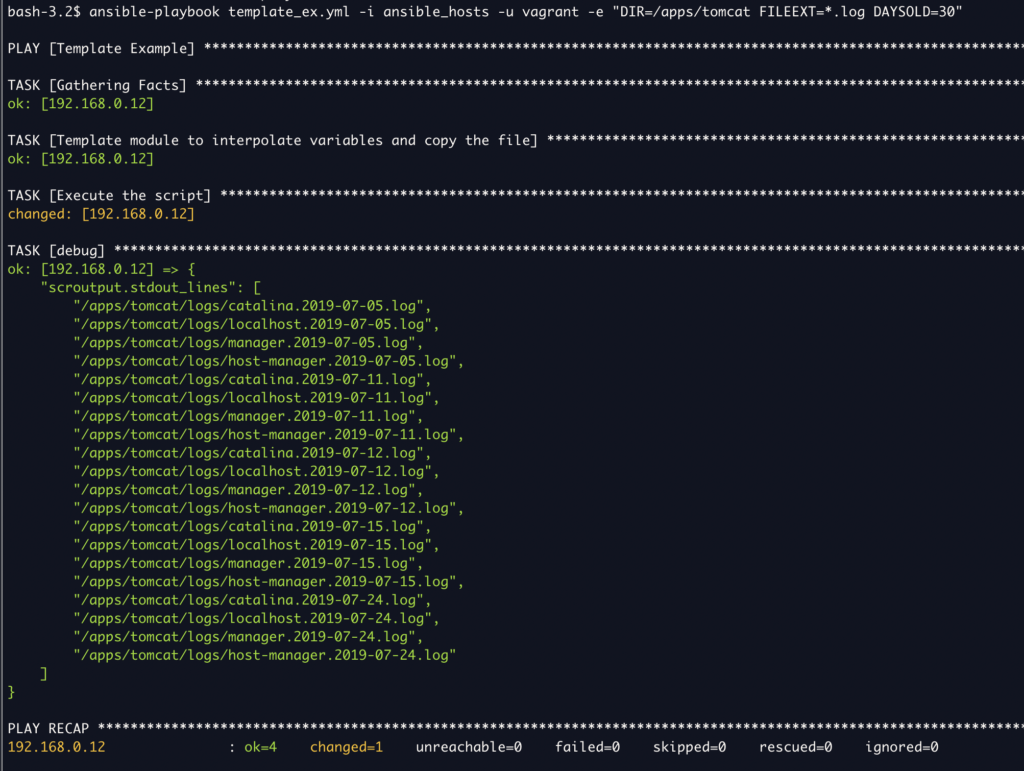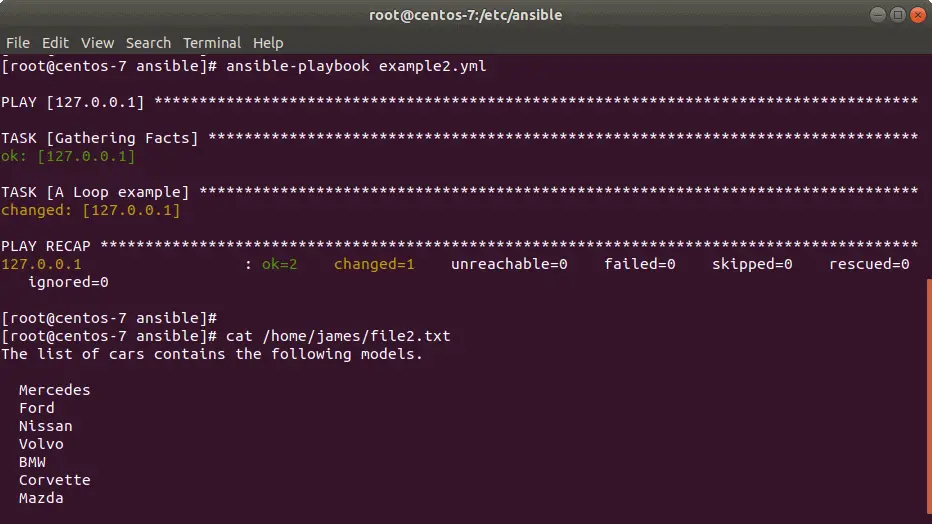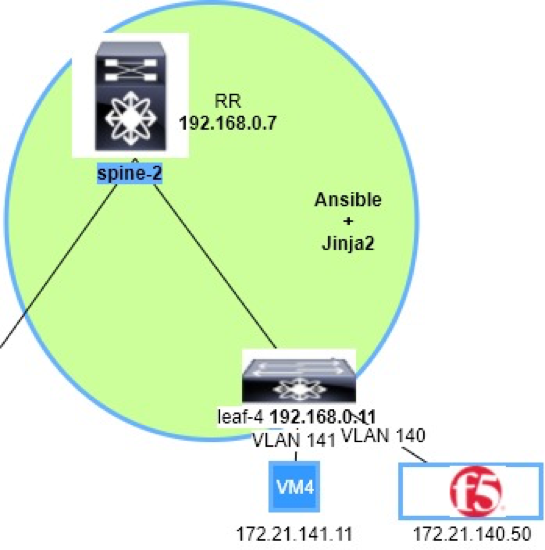Jinja2 Template Ansible
Jinja2 Template Ansible - Web ansible template module helps to template a file out to a remote server. Since ansible is written in python, it becomes the default choice for most users, just like other python. Web 1 answer sorted by: When you use templates, target files on discovered hosts are. 18 you already have the variable item defined and passed to the template, so there is no need to loop again. Web for working with templates and utilizing jinja2 native types see the jinja2_native parameter of the template lookup. Powerful automatic html escaping system for xss prevention. Web templating (jinja2) ¶ ansible uses jinja2 templating to enable dynamic expressions and access to variables. You can use templating with the template module. Streamlining devops workflows with go service templates can be an.
How to Use Ansible Template Module Linux Hint
You can filter it with list. One powerful thing about a template is that you can have a basic data. Web to use templates in ansible playbooks, we can use the template module, which takes as inputs the template and the target file, and other necessary parameters to customize the. Powerful automatic html escaping system for xss prevention. Web ansible.
Ansible Template module Examples Jinja2 Templates Devops Junction
Streamlining devops workflows with go service templates can be an. Since ansible is written in python, it becomes the default choice for most users, just like other python. {% set port = 1234 %} {% set server_ip = [] %} {% for ip in host_ip %} {% do server_ip.append ( { { ip }}: Web the template main_config.j2 writes strings.
19+ Templates Jinja2 PNG
One powerful thing about a template is that you can have a basic data file but use. Web below is the jinja2 template that i wrote to use in ansible. { { port }}) %}. This inventory plugin is part of and. Web 1 sorry, i can't follow what you're saying about the run_once:
How to Use Ansible Template Module Linux Hint
I want to include another jinja2 template. Web for working with templates and utilizing jinja2 native types see the jinja2_native parameter of the template lookup. 18 you already have the variable item defined and passed to the template, so there is no need to loop again. Web if you have a jinja2 template called test.j2 and a vars file located.
Solved Ansible hostvars with jinja2 template Red Hat Learning Community
Web the most powerful way to manage files in ansible is to template them. One powerful thing about a template is that you can have a basic data. {% set port = 1234 %} {% set server_ip = [] %} {% for ip in host_ip %} {% do server_ip.append ( { { ip }}: Web transforming variables with jinja2 filters.
How to Use Ansible Template Module Linux Hint
One powerful thing about a template is that you can have a basic data. Web jinja2 templates are files that use variables to include static values and dynamic values. {% set port = 1234 %} {% set server_ip = [] %} {% for ip in host_ip %} {% do server_ip.append ( { { ip }}: Web transforming variables with jinja2.
jinja template ansible ansible template if else Writflx
When you use templates, target files on discovered hosts are. Web jinja2 templates are files that use variables to include static values and dynamic values. One powerful thing about a template is that you can have a basic data file but use. Streamlining devops workflows with go service templates can be an. Simply put, at runtime ansible template module updates.
Task 3 Use of Jinja2 templates with Ansible Playbook Cisco Live
Streamlining devops workflows with go service templates can be an. Including a string that uses a date in the template will result in. Web below is the jinja2 template that i wrote to use in ansible. Ansible includes a lot of specialized filters and tests for templating. Web ansible template module helps to template a file out to a remote.
DevOps Hunter Ansible Jinja2 Templates ansible template module
Web the most powerful way to manage files in ansible is to template them. Web below is the jinja2 template that i wrote to use in ansible. Streamlining devops workflows with go service templates can be an. I want to include another jinja2 template. Simply put, at runtime ansible template module updates the jinja2 interpolation syntax.
How to Use Ansible Template Module Linux Hint
Web the template main_config.j2 writes strings that are defined as variables in the parent ansible playbooks and tasks. Web transforming variables with jinja2 filters where to set variables defining variables in inventory defining variables in a play defining variables in included files and roles. One powerful thing about a template is that you can have a basic data file but.
{ { port }}) %}. Web for working with templates and utilizing jinja2 native types see the jinja2_native parameter of the template lookup. 25 you get u' ' because you print the object containing the unicode strings and this is how python renders it by default. 18 you already have the variable item defined and passed to the template, so there is no need to loop again. Web ansible template module helps to template a file out to a remote server. You can use templating with the template module. One powerful thing about a template is that you can have a basic data. Ansible includes a lot of specialized filters and tests for templating. Since ansible is written in python, it becomes the default choice for most users, just like other python. When you use templates, target files on discovered hosts are. {% set port = 1234 %} {% set server_ip = [] %} {% for ip in host_ip %} {% do server_ip.append ( { { ip }}: Web ansible uses jinja2 templating to enable dynamic expressions and access to variables and facts. Including a string that uses a date in the template will result in. Web if you have a jinja2 template called test.j2 and a vars file located at group_vars/all.yml, then you can test the template with the following command: Web 1 answer sorted by: Web transforming variables with jinja2 filters where to set variables defining variables in inventory defining variables in a play defining variables in included files and roles. With this method, you can write a template configuration file that is automatically customized. Web templating (jinja2) ¶ ansible uses jinja2 templating to enable dynamic expressions and access to variables. Web 1 sorry, i can't follow what you're saying about the run_once: One powerful thing about a template is that you can have a basic data file but use.









